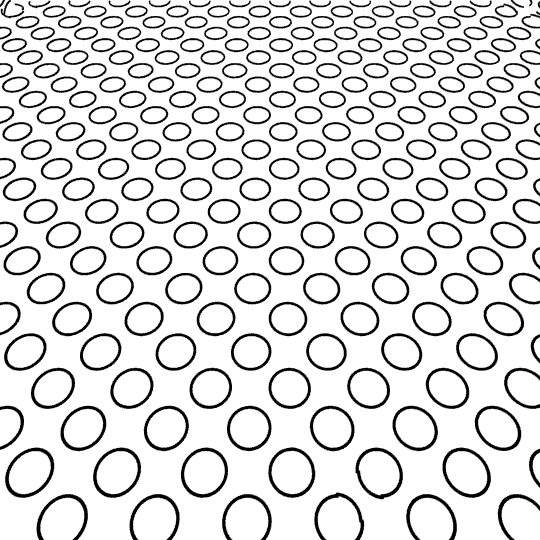cas/definition.php (people or term)

Unfolding Interactions
Related to the idea of Iterations that accumulate over time
More to come!
Toss a pebble in a pond and watch the ripples of water expand outwards; tip a domino over and watch it's effect ripple through the pile; drop a match in a forest and see the fire jump from tree to tree. In each of these examples we have long chains of causal links that can ripple through a system. Complex systems seem to tune this links in particular ways, so that a system can both spread signals across many agents distributed in space, but also limit their extent to exert too strong a control (see also Self-Organized Criticality). If a pheromone is a steering signal in a complex system, that helps the colony to find food, then we want that signal to gather enough agents to profit from the resource, but not so much that the colony ceases to explore other options too soon.
We can think of interactions unfolding in time, in space, or both. What is important is that these unfoldings always begin in localized ways, which can either propogate Positive Feedback or be dampened Negative Feedback.
Cite this page:
Wohl, S. (2022, 8 June). Unfolding Interactions. Retrieved from https://kapalicarsi.wittmeyer.io/definition/patterns-of-interactions
Unfolding Interactions was updated June 8th, 2022.
Nothing over here yet
Navigating Complexity © 2015-2025 Sharon Wohl, all rights reserved. Developed by Sean Wittmeyer
Sign In (SSO) | Sign In
Related (this page): Urban Informalities (16), Tactical Urbanism (17), Non-Linearity (26), LINKS (56), Landscape Urbanism (15), Evolutionary Geography (12), Rules (213), Path Dependency (93), Iterations (56), Feedback (88),
Section: terms
Non-Linearity Related (same section): Related (all): Urban Modeling (11, fields), Resilient Urbanism (14, fields), Relational Geography (19, fields), Landscape Urbanism (15, fields), Evolutionary Geography (12, fields), Communicative Planning (18, fields), Assemblage Geography (20, fields), Tipping Points (218, concepts), Path Dependency (93, concepts), Far From Equilibrium (212, concepts),
Nested Orders Related (same section): Related (all): Urban Modeling (11, fields), Urban Informalities (16, fields), Resilient Urbanism (14, fields), Self-Organized Criticality (64, concepts), Scale-Free (217, concepts), Power Laws (66, concepts),
Emergence Related (same section): Related (all): Urban Modeling (11, fields), Urban Informalities (16, fields), Urban Datascapes (28, fields), Incremental Urbanism (13, fields), Evolutionary Geography (12, fields), Communicative Planning (18, fields), Assemblage Geography (20, fields), Self-Organization (214, concepts), Fitness (59, concepts), Attractor States (72, concepts),
Driving Flows Related (same section): Related (all): Urban Datascapes (28, fields), Tactical Urbanism (17, fields), Relational Geography (19, fields), Parametric Urbanism (10, fields), Landscape Urbanism (15, fields), Evolutionary Geography (12, fields), Communicative Planning (18, fields), Assemblage Geography (20, fields), Open / Dissipative (84, concepts), Networks (75, concepts), Information (73, concepts),
Bottom-up Agents Related (same section): Related (all): Urban Modeling (11, fields), Urban Informalities (16, fields), Resilient Urbanism (14, fields), Parametric Urbanism (10, fields), Incremental Urbanism (13, fields), Evolutionary Geography (12, fields), Communicative Planning (18, fields), Rules (213, concepts), Iterations (56, concepts),
Adaptive Capacity Related (same section): Related (all): Urban Modeling (11, fields), Urban Informalities (16, fields), Tactical Urbanism (17, fields), Parametric Urbanism (10, fields), Landscape Urbanism (15, fields), Incremental Urbanism (13, fields), Evolutionary Geography (12, fields), Feedback (88, concepts), Degrees of Freedom (78, concepts),
